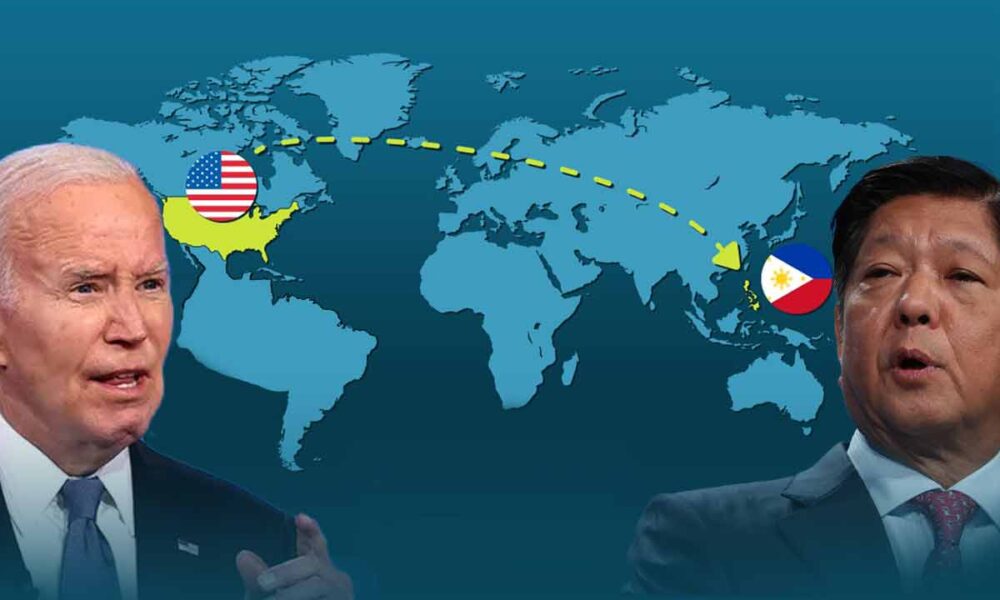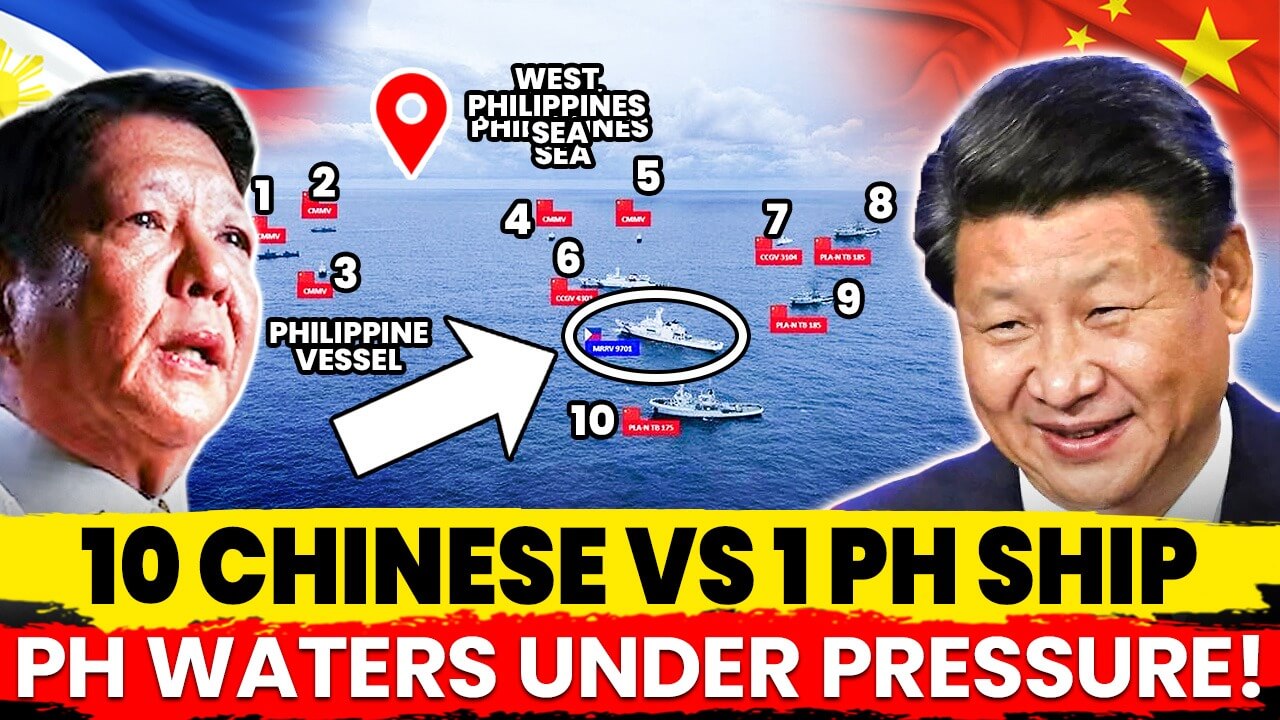Introduction
In 1898, the aftermath of the Spanish-American War saw the Philippines ceded to the United States, sparking a complex relationship that began with colonial rule and evolved into a strategic partnership. This historical backdrop sets the stage for understanding the multifaceted ties between the two nations, which have been shaped by geopolitical, economic, and cultural factors. Today, the U.S.-Philippines alliance is a critical component of regional stability in the Asia-Pacific, particularly amid rising tensions with China, highlighting the ongoing significance of this enduring relationship.
Historical Context
The 1898 Spanish-American War marked the beginning of diplomatic relations between the United States and the Philippines. After the United States defeated Spain, the Treaty of Paris was signed in December of that year, officially ending the war. Through this treaty, Spain ceded the Philippines, Guam, and Puerto Rico to the United States. As a result, the Philippines became a key focus of American colonial ambitions and expansionist policies.
However, the transition was far from peaceful. The Philippine-American War erupted shortly after the treaty, lasting from 1899 to 1902. Filipino forces, determined to achieve independence, waged a brutal struggle against the new American colonial rulers. The conflict severely strained U.S.-Philippine relations and resulted in significant loss of life. Despite the fierce resistance, the United States imposed colonial rule on the Philippines, leaving a lasting impact on the country’s political and social structures.
Under American rule, the Philippines underwent several modernization initiatives, including improvements in public health, education, and infrastructure. Despite these developments, the Filipino people remained steadfast in their desire for full independence, viewing these reforms with deep resentment. This long struggle for freedom eventually culminated in the Philippines gaining independence on July 4, 1946, following World War II and the end of Japanese occupation.
Strategic and Geopolitical Considerations
The Philippines’ strategic location has been a key factor in the United States’ commitment to maintaining a strong alliance with the nation. Positioned at the gateway to the Asia-Pacific region and along critical sea lanes, the Southeast Asian archipelago has become integral to American military and strategic planning.
For many years, U.S. military bases in the Philippines, such as Subic Bay and Clark Air Base, were central to America’s defense posture in the Asia-Pacific. Subic Bay, a deep-water port, and Clark Air Base, one of the largest airfields in the region, provided essential operational and logistical support to U.S. forces. Although these bases were closed in 1991 due to the expiration of leases and local political pressure, the United States has continued to seek ways to maintain its military presence in the region.
In recent years, the growing influence of China has once again brought the strategic importance of the Philippines into limelight. The United States has increasingly focused on countering China’s territorial ambitions, particularly in the South China Sea, where Beijing has asserted significant claims. The Philippines, which also claims parts of the South China Sea, has become a vital partner in this effort. As Chinese vessels continue to engage in confrontations and incursions into waters claimed by the Philippines, the U.S. and the Philippines have stood together in their maritime disputes.
This strengthened military cooperation is exemplified by the 2024 Balikatan exercises, the largest-ever joint military training between the United States and the Philippines. These drills, conducted in key areas such as the South China Sea and the Luzon Strait, highlight the Philippines’ strategic role in regional defense and security.
Economic Interests
Economic factors play a significant role in shaping the U.S.-Philippine relationship. The Philippines is a major trading partner for the United States, with a broad range of economic exchanges in trade, investment, and resource exploitation. These interactions provide valuable opportunities for American businesses and access to the Philippine market.
In early 2024, U.S. companies announced over $1 billion in investments in the Philippines, particularly in the energy, technology, and infrastructure sectors. For instance, American companies are involved in key infrastructure projects, including the economic corridor unveiled in April 2024.
This economic corridor is a significant initiative aimed at enhancing connectivity and driving economic growth in the Philippines. It is part of Washington’s Partnership for Global Infrastructure and Investment and is designed to connect major ports and economic zones across Luzon. The project is expected to boost trade and reduce reliance on imports from China. It is widely seen as a counter to China’s Belt and Road Initiative, which seeks to expand Chinese influence through infrastructure investments in various countries.
The Philippines’ natural resources have also long attracted American interest. The country is rich in valuable minerals essential to numerous industries, and the United States has sought access to these resources to advance its commercial and strategic objectives in the region.
The Philippines is indeed an important trading partner of the U.S. The trading items include semiconductor devices and computer peripherals, automotive parts, electrical machinery, clothing and textiles, coconut oil, and IT/BPO services. The exports from the U.S. include cereals (like wheat), machinery, agricultural products, and raw and semi-processed materials used in manufacturing electronics, semiconductors, and transportation equipment.
The bilateral economic partnership is further supported by agreements like the Trade and Investment Framework Agreement (TIFA), signed in 1989, and a tax treaty. These agreements promote trade and investment between the two nations.
Cultural and Social Factors
Cultural and social ties are also crucial aspects of the relationship between the United States and the Philippines. American influence is evident in many aspects of Filipino life, including language, education, and media. English, one of the official languages of the Philippines, is widely spoken and reflects the enduring impact of American colonization. The country’s educational system was heavily influenced by American models, helping to establish a shared language and cultural foundation.
The migration of Filipinos to the United States has significantly shaped the socioeconomic landscapes of both nations. As of 2024, an estimated 4.5 million people of Filipino descent, including both immigrants and U.S.-born individuals with Filipino parents, reside in the United States. This large population is the result of a long history of migration that began in the early 20th century and has steadily grown in recent years.
The large Filipino American community plays a vital role in strengthening U.S.-Philippine relations. The strong cultural and historical ties between the two countries are reinforced by the active participation of Filipino Americans, many of whom support initiatives that promote development in the Philippines and deepen bilateral ties. Additionally, remittances sent by Filipinos working in the United States are crucial to the Philippine economy, providing financial support to countless families and further solidifying economic connections between the two nations.
The success and active engagement of the Filipino diaspora in American society positively influence the Philippines’ perception of the United States. This highlights the power of cultural and community ties, enhancing the U.S.’s image and reinforcing the long-standing alliance between the two countries.
Political and Diplomatic Relations
The political and diplomatic dimensions of the U.S.-Philippine relationship are rooted in the mutual defense treaty signed in 1951. This treaty, established shortly after the Philippines gained independence, provides a framework for military cooperation and mutual defense. It reflects the commitment of both nations to support each other in times of conflict and to work together on security matters.
The relationship between the U.S. and the Philippines has seen fluctuations depending on the political climate in both countries. For instance, the administration of President Rodrigo Duterte marked a shift toward closer ties with China, impacting the U.S.-Philippine dynamic. Duterte’s policies included a temporary withdrawal from agreements that allowed U.S. forces to train and operate in the Philippines.
But President Ferdinand Marcos Jr.’s present administration has reaffirmed the long-standing security connections with the United States. Increased military collaboration has resulted from this change, including the start of joint drills and improved assistance for the Philippine military. Examples of this enhanced collaboration are the 2024 Balikatan exercises and the US commitment to updating the military infrastructure in the Philippines.
Contemporary Issues and Challenges
The relationship between the United States and the Philippines is increasingly defined by the ongoing tensions in the South China Sea, particularly in light of recent incidents involving collisions between Chinese and Philippine Coast Guard ships. These events highlight the persistent territorial disputes and the heightened state of affairs in the region. In response, the United States has reaffirmed its commitment to the Philippines under the Mutual Defense Treaty, warning China that any armed attack on Philippine forces, vessels, or aircraft in the South China Sea would trigger mutual defense obligations.
In addition to diplomatic support, the U.S. has been enhancing its military cooperation with the Philippines. This includes deploying advanced military equipment like the Typhon mid-range missile launcher in the Asia-Pacific region and conducting joint maritime exercises with the Philippine navy to enhance operational coordination. Despite the rising tensions, both nations are also focusing on broader strategic initiatives, such as establishing an economic corridor and deepening military collaboration, reflecting their commitment to mutual support and regional stability.
Conclusion
The United States’ designation of the Philippines as a strategic partner is rooted in a complex interplay of historical, geopolitical, political, cultural, and economic factors. This partnership, evolving from colonial ties to contemporary alliances, reflects the mutual interests of both nations within the broader geopolitical landscape. The Philippines’ strategic geographic location, economic potential, cultural connections, and political dynamics make it a key ally for the U.S., particularly in the context of shifting global dynamics and regional security concerns driven by China’s rise. As the partnership moves forward, its stability and strength will likely be influenced by domestic political changes and broader geopolitical trends, necessitating continued cooperation between the two nations.



